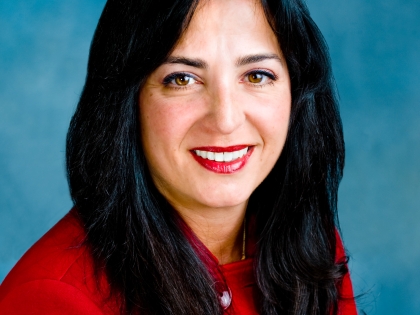
Public Pensions Are Weighing On Taxpayers
Taxpayer support of state and local public employee retirement programs has increased more in New York than any other state except Arizona, recently released U.S. Census data show — and the Empire State's $486-per-resident cost in 2007 ranked highest in the nation.
New York, meanwhile, is one of only a handful of states where employee contributions have declined over the past decade.
Gov. David Paterson, New York City Mayor Michael A. Bloomberg and Rochester Mayor Robert Duffy all have pension reform in their crosshairs, hoping to save millions in taxpayer dollars at a time of massive budget shortfalls. But those savings would not be immediate, as changes would affect only newly hired employees.
Paterson's proposal targets civilian pensions, and Bloomberg's target those for public safety employees.
Duffy, testifying Thursday before the state Legislature financial committees, urged lawmakers to reform pensions for all newly hired employees statewide.
He then went further, advocating that Paterson's call to no longer count overtime toward civilian pensions be extended to police and firefighters as well.
Duffy has railed against non-essential overtime, particularly in the Police Department, and the ability of some government employees to inflate their pensions by racking up overtime in their final years before retirement.
But — despite a projected $15.4 billion state budget gap over the next 15 months and a nearly $32 million shortfall in Rochester for 2009-10 — the proposals are not likely to go anywhere this year.
"I don't believe that these proposals will be part of the year's budget," said Sen. Diane Savino, D-Staten Island, part of the new Senate majority and newly-appointed chair of the civil service and pension committee. "I don't believe they should be either, for that matter.
"The reason the budget is $15 billion out of whack has nothing to do with the pension system."
The boom and bust of the stock market, and arguably short-sighted budgeting and generous benefit increases, contributed to the rise in taxpayer support in the decade between fiscal years 1998 and 2007, the most recent data available.
In Rochester, taxpayer support of city employee pensions went from $5 million to $22 million between fiscal years 1998 and 2007, city records show, and total nearly $24 million for the current year.
Monroe County government pension contributions went from less than $7 million to $24 million during the same period, falling back to less than $20 million this year.
The suburbs also are riding the wave. The town of Greece saw its police and civilian employee pension contributions (firefighters are handled through the fire district) climb from little more than $200,000 in 1998 to $2.1 million last year, and currently $2.2 million.
And officials are bracing for further, significant increases to make up for Wall Street's downward spiral.
"Looking at 2011, I can only imagine what is going to happen to get the pension system funded back to the level it needs to be," said Scott Adair, the county's chief financial officer. "We're probably looking at a double-digit increase."
Nationally, public retirement benefit payments hit a record $168 billion in fiscal year 2007 — a $12 billion increase from the year before. The number of retirees and survivors receiving benefits climbed from 7.3 million to 7.5 million in that time.
In New York, payouts now exceed $19 billion with 750,000 beneficiaries, up from $18 billion and 738,000 beneficiaries the year before, census figures show.
Currently the state has 10 public employee retirement systems, with membership of 1.3 million. The average state or local government worker's pension was $24,744 for those who retired last year, up from $15,026 a decade ago. Police and firefighters averaged a pension of $58,106 in 2008, compared to $37,413 in 1998.
Chasing reform
In his budget address last month, Paterson proposed a new pension tier for newly hired state and local government employees. "Governor Paterson recognizes the important contribution public employees make to life in our state. But their pension benefits, which far exceed those that most private sector workers receive, have become unaffordable in this time of unprecedented fiscal crisis," said Paterson's budget spokesman Matt Anderson.
Anderson said the state's current fiscal crisis provides "an opportunity to make smart choices today that will pay big dividends for taxpayers in the future."
The governor's Tier 5 plan would mainly return pension benefits to the levels prior to the late 1990s, when the state Legislature agreed in good fiscal times to increase the pension benefits for retirees.
Most notably, Paterson's proposal would return the minimum retirement age from 55 to 62 and requires that employees contribute 3 percent of their salary toward pension for their entire length of service. The Legislature in 2000 eliminated employee contributions after 10 years of service, explaining why New York is one of few states whose employee contributions declined. Overtime also would no longer be included when calculating pensions.
Paterson estimates the savings at $10 million in the 2009-10 fiscal year, which starts April 1, and $30 million in the 2010-11 fiscal year.
The state retirement plans for police and firefighters' retirement are 100 percent taxpayer supported, and they can retire after 20 years with full benefits. Duffy — who had a 29-year career as a Rochester police officer, including eight years as chief, began drawing a $70,255 pension in April 2005, after retiring to run for mayor. His salary as mayor is $127,694. Duffy said he has refused a cost-of-living adjustment to his salary for the upcoming fiscal year.
In New York City, a plan drafted by Mayor Bloomberg would push that retirement point to 25 years and not award full benefits until age 50, saving New York City an estimated $5 billion-plus over 20 years.
Sen. Savino doesn't argue there might be areas to save money but says the proposals put forth so far represent a "knee-jerk reaction" and do not deliver substantial savings.
The roaring '90s
Public employees, by and large, are paid less than private sector employees, Savino said. The added benefits and early retirement have been negotiated and reflect the higher level of risk and stress of their jobs.
She plans to begin meeting with Assembly leadership next week and convene representatives of all involved parties to study the matter.
Officials need to first look back to understand the issue, she said. The roaring stock market of the 1990s insulated government from the true costs of the pension system. In 1999 and 2000, with the state retirement system flush with cash, the state reduced municipalities' contribution requirements, and some fell to nothing. Instead of setting aside or investing the savings, the money got spent on other things.
And Savino adds that "with lots of money to spend, (some municipalities) agreed to some pretty lucrative contracts."
"What you were doing is you were playing with other people's money, and now you are complaining about the cost," she said. "Eventually, you have to start contributing again."
For Rochester, government contribution rates have returned to levels of the 1970s and 1980s, when Duffy was still walking the police beat. And the state has begun setting the rates earlier, allowing communities more time to plan.
But Duffy, in his testimony to state lawmakers last week, said more must be done.
Duffy estimated that Paterson's proposal would yield an immediate $100,000 annual savings for the city, building to $1 million in 10 years. More significant, he said, would be to eliminate overtime from pension calculations — a move he said would eventually save the city more than $4 million a year.
"New York should not include overtime in its calculation," the mayor testified, continuing later: "This is not about quality of work, it is about keeping government viable."
Police overtime this past fiscal year will add nearly $2 million to the city's pension contribution. Police and fire contributions together account for 72 percent of the city's $23.7 million in retirement expenses, which now exceed those of the county.
Mike Mazzeo, president of the Rochester police officer's union, noted the safeguards limiting how much overtime can affect pensions. But those benefits were negotiated, he said, with labor making concessions to get them. He echoed Savino, saying those pushing reform have some explaining to do.
"When the economy was good, and they did not have to make contributions ... what did they do with that money then?" Mazzeo asked. "What did they spend it on, a ferry?"
E.J. McMahon, director of the Manhattan Institute's Empire Center for New York State Policy, said that Paterson's reform doesn't go far enough because it only returns pension benefits to prior limits.
McMahon said the state's public pensions are well above what the private sector offers. The state can't legally change the pensions received by current retirees or workers in the system, McMahon said, so the focus has to be on new workers.
He added that it's up to the governor and the state Legislature to change pension benefits, which are not negotiated as part of new union contracts.
"We need to shut this system down and change to a more affordable system as soon as possible for new hires, which the governor is not proposing," McMahon said.
Comptroller Thomas DiNapoli argued that adding a new pension tier now may be premature. He said the state's roughly $120 billion pension fund has consistently provided strong returns, which have led the state to cut pension costs to state and local governments.
"I find it interesting when some people comment about the soaring increase in pension costs," he said. "The reality is we've been cutting them for five years."
DiNapoli warned, however, that the state's pension fund is expected to lose at least 20 percent of its value this year because of the economic downturn, so pension reforms may be needed.

